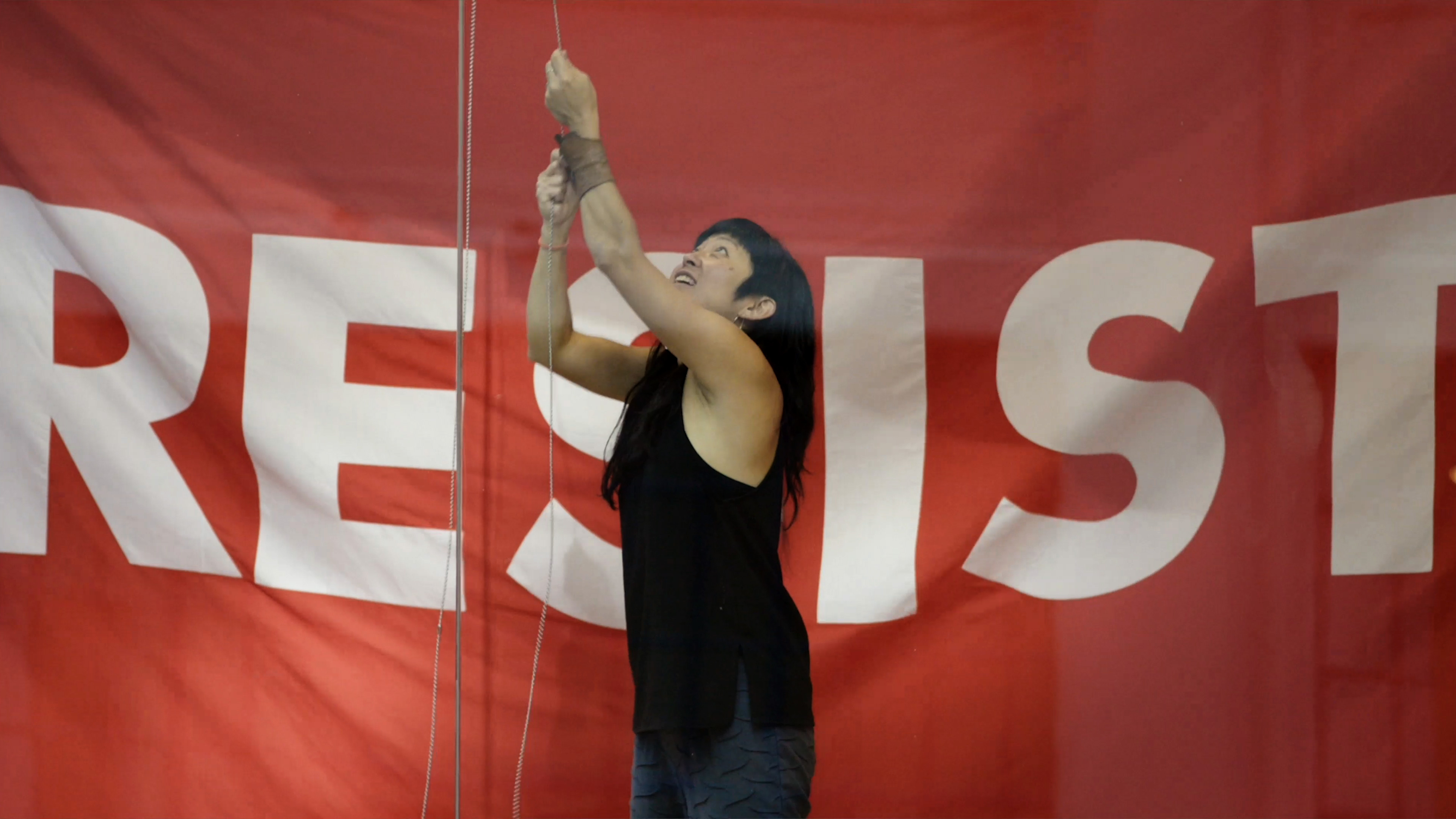
Stephanie Syjuco installing her exhibition CITIZENS at RYAN LEE Gallery in the upcoming season of Art in the Twenty-First Century, New York, 2017. Production still from the Art in the Twenty-First Century Season 9 episode, San Francisco Bay Area. © Art21, Inc. 2018.
At Art21, the voices we care most about are those of artists. Artists give us new ways of dealing with old problems, shake up our ways of seeing the world and our established patterns of thinking. Artists’ words don’t always make perfect quotes, but artists are change agents; they use their voices for the advancement of ideas, the opening of new possibilities, and the empowerment of their communities.
This Art21 Magazine issue was motivated by the transmogrification of speech in our digital culture. As digital propaganda proliferates, it has found a new name: computational propaganda. Frequently programmed to spew misinformation, chatbots—the tools of computational propaganda—are assuming a voice at a level and cadence that is continually transforming our way of life. As the chat programs advance, they are increasingly able to imitate human thought and speech and convey more emotional complexity. Their programmers have cunningly recognized the power of speech and have found ways to harvest its message.
In this issue, “Figures of Speech,” we feature artists’ projects that employ and investigate the power of speech, in analog and digital ways. In 2005, Heather Hart and Jina Valentine founded the Black Lunch Table (BLT), an oral-history archiving project that mobilizes a democratic rewriting of contemporary cultural history by creating sites of dialogue for Black-identifying cultural producers. For this issue, Hart and Valentine reconvene the group of artists who participated in the first BLT, revisiting the topics they discussed earlier to assess what progress has been made in the thirteen years since the project began.
The artist Stephanie Syjuco, who will be featured in the upcoming season of Art21’s television program, has been interested in the language of protest for some time. She has based a body of work on protest banners, with messages like “Resist” and “Ungovernable,” to address the frequent illegibility of messages that travel through the media. In this issue, she talks with Astria Suparak, an independent curator, on how the notion of speech influences and drives her practice.
In 2003, a group of artists, critics, philosophers, and writers in Saint Petersburg formed the Russian collective, Chto Delat (meaning, “What is to be done?”), with the goal of merging art, political theory, and activism across a range of media including film, newspapers, and radio. Language, speech, and the spread of information are threads that run through all of Chto Delat’s work. Dmitry Vilensky, one Chto Delat member, contributes an essay that theorizes on the role of the fable in contemporary culture to break down its frequently moralizing message.
Offering a diversity of perspectives on truth, storytelling, protest, and knowledge, “Figures of Speech” examines the capacity of art for self-expression, community building, and political activism in 2018.